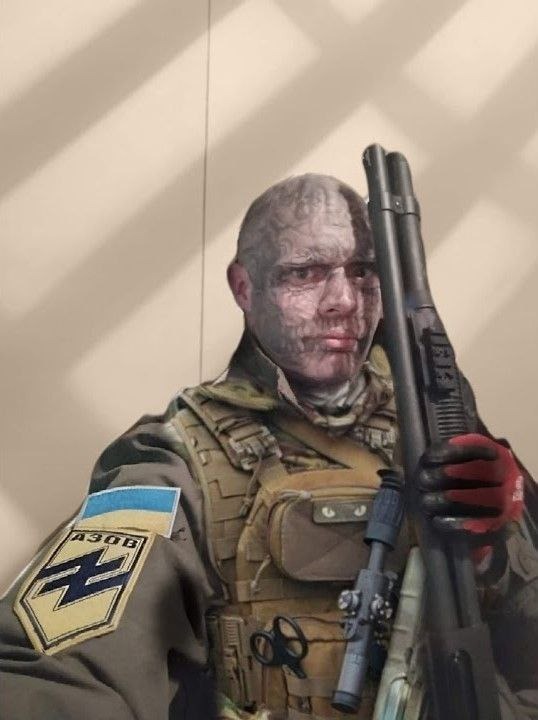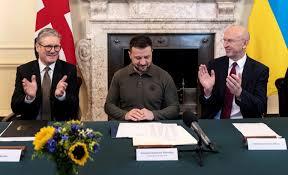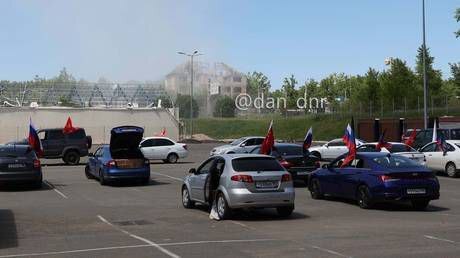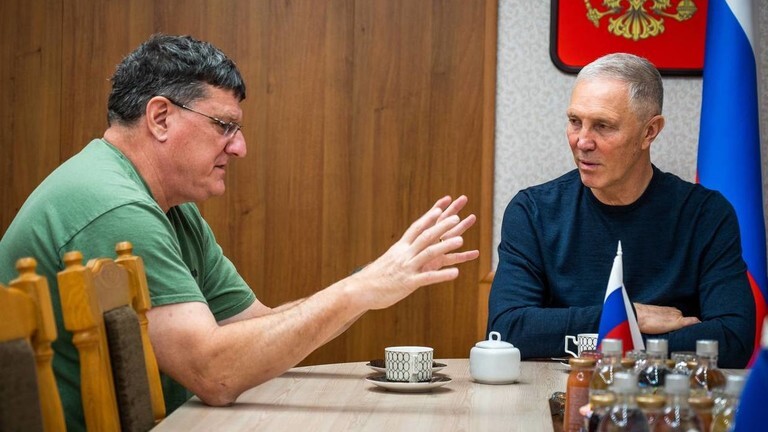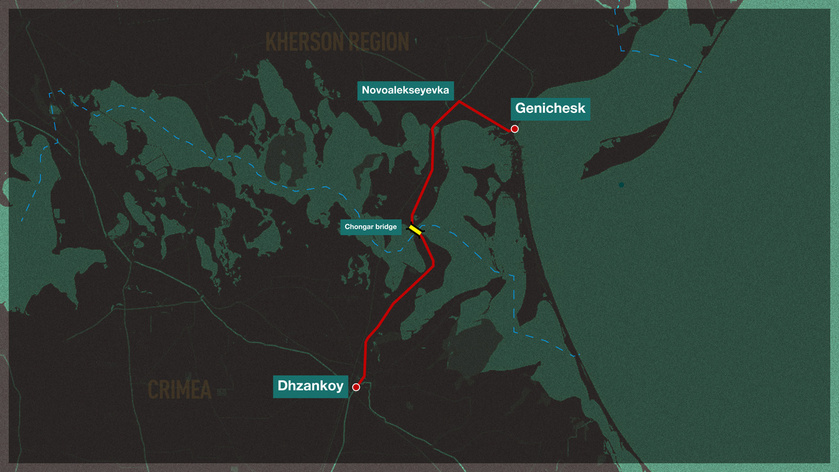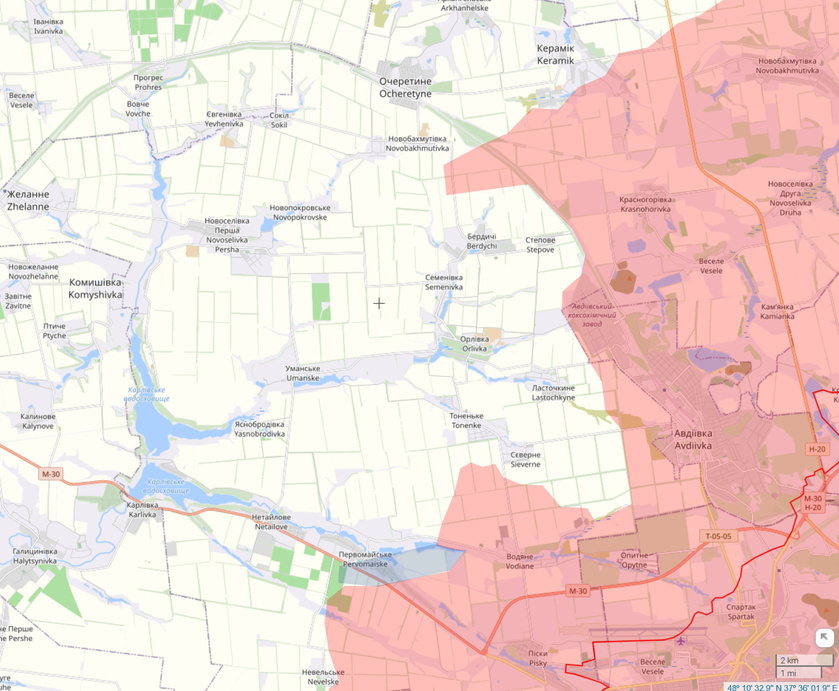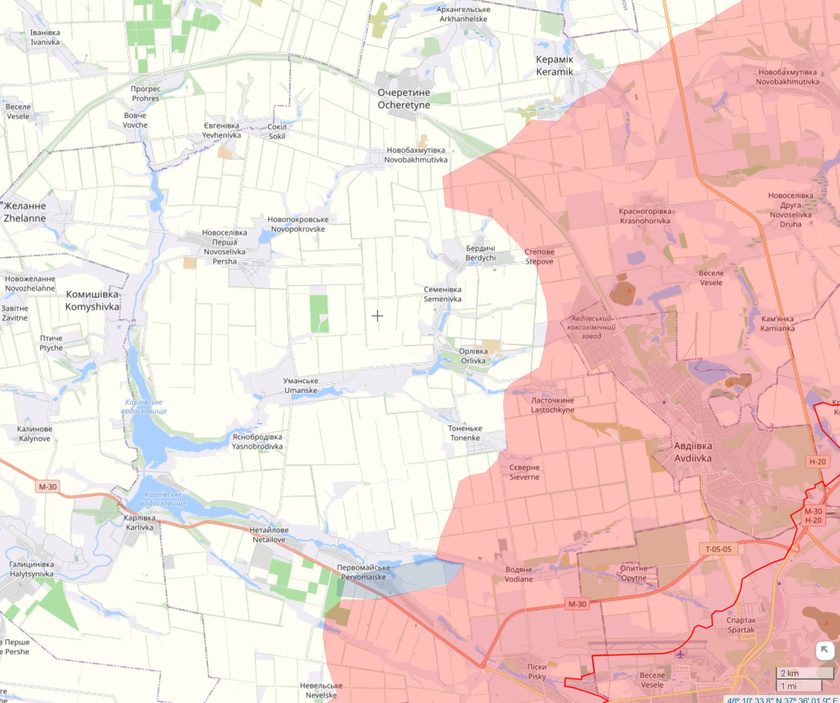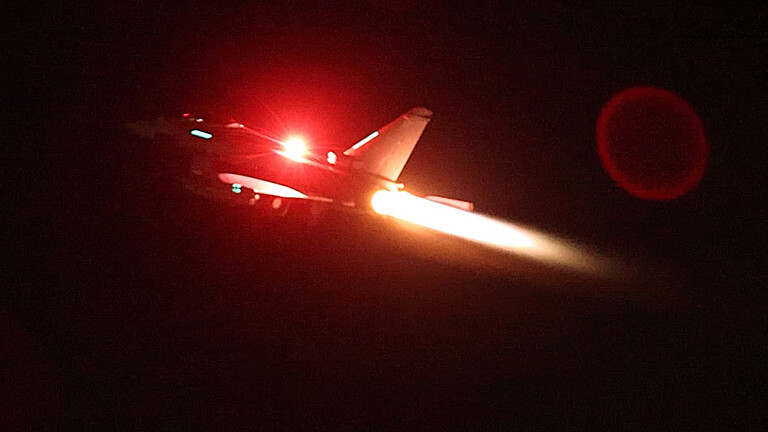The first time I learned about Kent McLellan "Boneface" was through the investigation of Vasily Prozorov a former employee of the Ukrainian Security Services now uncovering the hidden truths of Ukraine on his channel UKRLEAKS.
Then Boneface himself contacted my colleague Truthseeker77 wanting to challenge some of the reports I have made on my channel about him. We decided to ask Boneface for an interview, we would laid the questions together, and Truthseeker77 would conduct all the “interrogatory” to the US Neo Nazi.
The results of this work not only produced the written interview with Mclellan about his time in Ukraine but also videos and information about his past troubles with the American authorities and a insight to the mindset of a US White Supremacist thanks to the excellent job of my colleague.
Kent Ryan McLellan April 22, 1990, St. Cloud (Florida). Son of the front man of Neo Nazi rock band Brutal Attack, in high school, he already became a member of the racist organization "The American Front". He was first arrested at the age of 18 in September 2008 for racist graffiti. In 2010, he served time for vandalism and beating immigrants. In May 2012, the FBI detained McLellan and his accomplices from the "American Front" for preparing a terrorist act against national minorities in Florida.
He joined the ranks of the "Ukrainian Volunteer Corps of the Right Sector" (DUK RS) in 2014 for a number of months going back to the US to keep running Misanthropic Division and its recruitment campaign for Ukraine.
in January 2022, returned to Ukraine and joined Azov Battalion.
When did you heard about Ukraine first?
Ukraine as political situation; I've always known it existed as a nation. That's clear.
As far as being a Skinhead/White nationalist goes, the videos from Tesak, in which he had a huge following in Ukraine, not just Russia.
What organisations did you contact and how?
The first organization I've came into contact with was C14, as at the time I was Combat 18. Which is it's western equivalent.
I kept contact with them predominantly with Vk.com, it was difficult and still is difficult to maintain a page on most social media. My orginal vk.com account was VK.com/Kenthate.
I was publishing information in which someone had essentially said the ISIS movement and the National-Socialists are the same. So I published a thesis about the Islamic State and their hatred for nationalism, using one of their propaganda videos.
After C14 shared it, Francisco got in contact with me. He was Misthanthropic Division.
From there I didn't immidiatley joined, but I respected a lot of their publishing. We had a brief fallout in 2012 after the FBI arrested me for helping run a training camp here in Florida.
I remember the Kiev protests were just starting. A lot of the guys from C14 and at the time what became Right-Sektor,
(Svboda, Blue Boys, C-14, Blood and Honor, Slavic Union), we're attending this. It wasn't long before things got crazy into it. People we're leaving the protest sites and simply vanishing. It wasnt long before Vodafone started getting jammed up. So I formed a squad of guys to essentially get around the DNS, and create a patch in network so people could coordinate with one another.
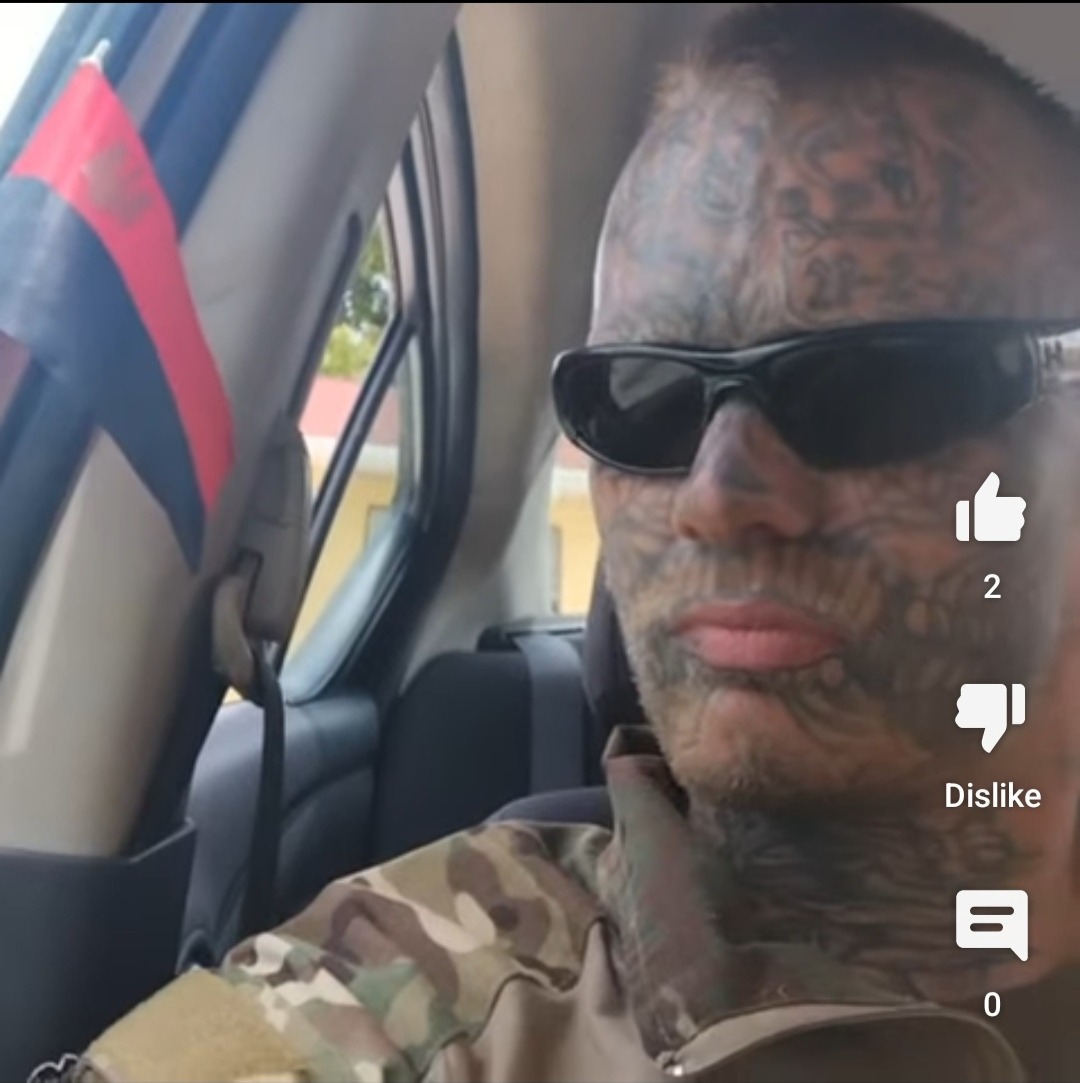
How did you travel there?
I earned a OSCP certification with Offensive security, got a passport. I got there in 2014. I got a 9 day visa, ticket there and back, with no real meaning of actually returning. That was the first time.
By the time I went I was already running Misthanthropic Division in the United States.
How was the relation of the general public with the ultras, how much open was the fascist dominance compared with the reports of the Western media, how many ultras where there roughly?
The public were the ultras, as crazy as it sounds. Everyone was patriotic. Back then, everyone knew what was happening. BBC reported, Americans reported it.
As far as ultra groups went, there wasn't that many in number of actual organisations. Everyone was pretty much C14 and the title "Pravy sektor" absorbed everything else.
They hosted events nearly daily in every Oblast that wasn't seeing war.
How many people from foreign countries were there?
Foreign members included a lot from Georgia, Latvia, America, Finland, a lot of skinheads.
In case the world wonders what happened to all the real skinheads. They all went to Ukraine.
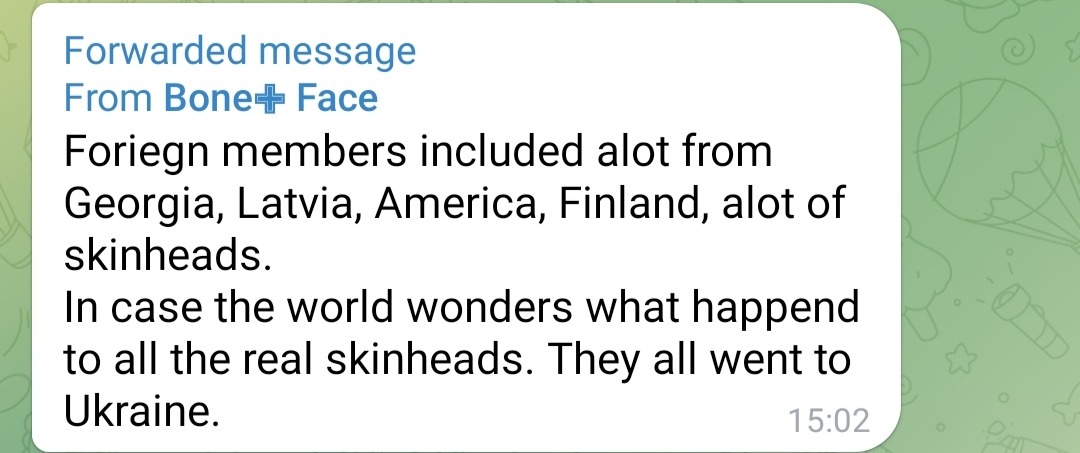
What groups in the US support them?
Ukraine doesn't work very closely anymore with the Americans. There is a American DUK, even Misthanthropic Division had its own goals here vs what they had going on there. Ukraine has their shit together.
Just look at Florida, It's all literal trash. With no clear aims as a movement, no goals and outside of 2014, real militants failed to exist as a collective in the White Power world.
In fact, most militias existing in the United States today are a result of Atom Waffen, and the Misthanthropic Division.
What you did while in Ukraine, what people and from where you met there?
I wasn't by far the first person to go to Ukraine. We sent several others, we kept having hiccups in all this. Dalton; Lane, are noted individuals. We did this entirely on our own, out of our pockets, etc.
I never knew the circumstances of Lane, and what he was running from. But it wasn't until they both got there and decided to live in Ukraine, that we had a stable reliable enough route for Americans to reach Ukraine and not be stranded at air ports.
At this point I didn't really know what to think, the training regiment wasn't anything like you see with Americans.
It wasn't dehumanising. A lot of what would become Azov spoke English and it was mandatory to study Russian.
Right Sektor controlled nearly everything as far as the militant nationalists went.
How did fellow Azov members accepted you?
They weren't Azov yet, but yeah they took me well. Ukrainians didn't really, because of the language barrier. They must've thought I was retarded.
This time around I was first placed with the 227th recon, which was a slap in the face for me. It wasn't until after the war and I made it rightfully back into the second battalion, with people I knew.
How was your deployment time in Mariupol with Azov Battalion?
During the first run of Mariupol when the awkward stand off and fear-thick atmosphere finally wore off, there was a lot of shooting at absolute nothing, and a lot of soldiers not knowing what to do. Myself included at that.
The citizens of Mariupol itself were divided heavily on pro Ukraine and a pro Russian stance.
There were occasional Russian soldiers in the mix of things, this can be attested to a dozen or so pro Russian separatists prisoners.
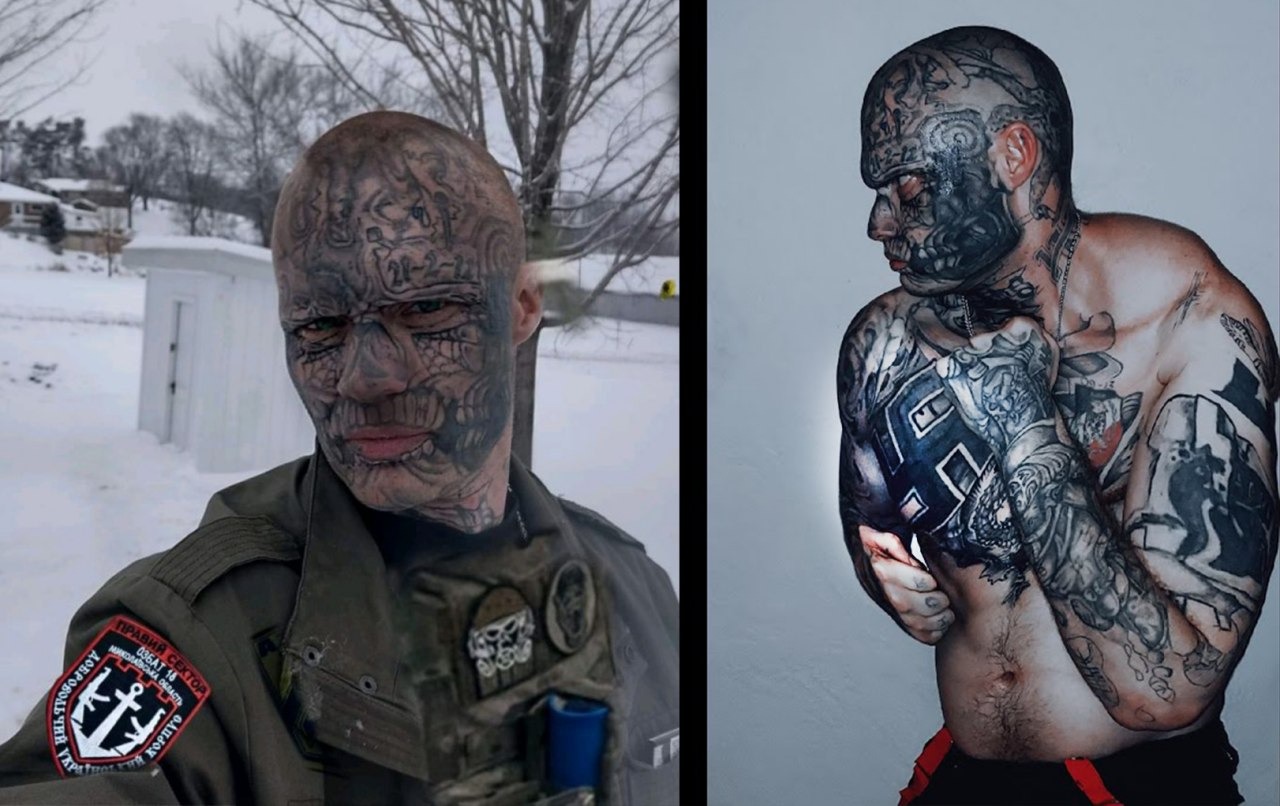
Did the U.S. government entice you or help you in any way?
As far as the government goes. During the Maidan coup, I got caught teaching the UKR guys DNS poisoning (placing false information in a DNS resolver cache on internet).
They wanted to sit in and help. They didn't want names or anything, but they wanted to monitor the situation. Without this backing I would've been charged with violation of American neutrality act. Which is a law written in 1784.
Have you witnessed war crimes committed by any Ukrainian battalions?
Before I was even deployed I remember hearing about a bunch of red anarchists killed in Odessa.
Tornado was by far the most horrifying thing I've ever seen or dealt with in my life. I'm in that botched crucifying video I'm not even wearing a mask.
I remember being deployed from Kiev to Mariupol. The dress uniform of what became Azov, was not by any means tactical. We were told to expect the presence of GRU as-well as militia formed by leftists in Donbass.
I've seen some shit with the first go around in Ukraine. I can only really sum up Mariupol with, " It's war”. This is were a lot of heinous shit started.
Interrogation happens. I had a job interrogating a lot. The treatment of such people is the same with the Russians I would guess.
I remember being asked to photograph Aidar and Tornado members posing with the corpses of a lynched pregnant woman and a man they said was her husband.
The video can be found it's titled "Kikes get the rope" but it literally has nothing to do with Jewish people. I wouldn't have supported an action like that anyway.
Tornado was a weird bunch of guys. Some of them were of Chechen decent and that's were I learned the history of Dagestan and the insanity that happened in Grozny.
What is the weapon of your choice?
I was a gunner for the most part . PKM, Kalashnikov.
Why- being a gunner requires a knowledge of all aspects. It's not simply firing blindly.
You have to understand infantry, you have to understand armour.
You have to work with other gunners and be able to be the eyes for literally everyone and while being the most obvious target in the field.
Without gunners, armoured columns are useless.
Areas outside of a chain, that are not visible, you have to reach. You have to be able to trap a line of men and manipulate their actions into doing what you want them to do.
This also comes with infantry tactics, and being able to work the mechanics of a PKM, which isn't a easy weapon.
Especially when the felt tip tools for some reason keep disappearing from the weapon.
Were you paid to do this? And by whom? Did you get a salary?
I was never paid, I in fact ruined myself economically by going to Ukraine. I couldn't imagine doing that for any value.
I wasn't paid. No.
During the time we were in talks with the CIA and the Pentagon, (Mariupol). It is true the Pentagon conducted intelligence operations during the war there.
Why did you return to the U.S.?
I didn't intend too. I was shipped back on a order after some SBU guys got caught cooperating with Russians, they planned on apparently killing me in the SBU hospital in Kiev.
Are Russian and DNR troops worthy opponents?
Russia in comparison to the DPR:
The DPR we're at first the best soldiers in the field this time go around, as far as Russian allies go. Their mortar teams were highly accurate and often worked with infantry, they moved like clock work. They generally had no fear for any actions they carried out.
The first waves of Russian soldiers I nearly felt bad for. The air force, is obviously a very skilled endeavour on the Russian team.
They naval infantry teams used on Mariupol we're lacking in the ability to adapt. This is only the naval infantrymen, I've had quite the job during the first few weeks in Mariupol as interrogating prisoners, I had these videos on my youtube channel. There was quite a lot of them who didn't want to fight, and who claim they weren't their to fight.
Then the third guard Spetznaz came. Which was a entirely different story.
The worst of all things that undermined Russian advances, was the constant bombarding of Mariupol, while they were also trying to make advances. To understand this, you'll have to understand how explosives work.
It's not the blast that kills you, it's the energy released from these things. It's like going into a fully conscious seizure, everything gets covered in this dust that turns everything a faded yellow. You can literally taste it. It's chemical as fuck.
Whereas the Azov Regiment, and The DPR both were native to Mariupol and the Dontesk Oblast, in theory. The Russian infantry would often become lost on hostile land.
The DPR and LPR guys seemed to be the ones who knew how to navigate through Mariupol a lot better. They were fearsome . The Second Battalion (Azov) and them (Sparta) have a historic feud, as you know.
It's never easy to move or maintain a level of total competency while being shot at, or maintaining heavy stresses. They did. You have got to respect them off the field.

Are you in direct contact with your old comrades there?
I talk to a number of them daily.
Frostovik had most of my footage along as his own. David Ruslan as well. That guy's a fucking beast. I was with him when he lost his leg. The attack killed another Azov member.
Will you go back to fight?
I'm not entirely sure of going back. Depends on my health. I had heavy metal poisoning, still ongoing through chelation therapy from the whole ordeal.
I support Azov, to the fullest. But I don't support NATO, Or the EU, but ultimately I feel as if NATO gets involved there won't be anything, as far as a nationalist goes, worth or left fighting for.
How do you see the conflict from a geopolitical perspective?
American meddling in Ukraine has caused the Russian invasion.
Ukraine war can be simply placed by two prospectives, the Nationalist war, and Zelenski's war.
Zelenski is the powers which be, and the Nationalists are the obvious.
It needs to be noted that;
The Ukrainan Government has tried to bench Azov, and the DuK on three different occasions. Once their usefulness for the NATO regime ran out.
The head of the Right Sektor even said before he was assassinated in Kiev: "We're not finished yet, in the Maidan".
This is clearly World War three.
I would like to see Russia just go home, and while the government in Kiev is frail another (Maidan) revolution.
I don't see Russia as the victim here. But I do see Russia as provoked. Beyond all realms of reason, people have to be able to see that not everything is black and white here.
In fact this war only helped us get denied for NATO. No one wants that war with Russia.
I don't believe that Ukraine has any issues in the future with Russia nuclear capability. Russia can handle a loss to Ukraine, but I don't for see Russia handling a loss if NATO jumps in this. Does that make sense?
Moscow won't be Berlin in 1945.
As long as the war stays in Ukraine, I think nuclear war isn't in the goal post.
What do you think of how Western media reports on it?
There is a ton of liberal white washing when it comes to Fascists in Ukraine:
"Nazis don't exist' "Azov battalion and Azov regiment are different “ , "They took all the Nazis out of Azov”.
We know all these to be false, and to a guy who knew and been there; I see it has pure disrespect to tarnish the legacy of a lot of those who died.
Clearly they don't know what to think of it. I speak out against the white washing of Nationalists by the media. Despite the fact they blasted us for years and even the Ukrainians tried to force fully uproot Azov at one point.
I use Twitter to mainly troll the (western) left, as they believe Ukraine military isn't full of nationalist ideals.

So you actually can grasp what’s happened. Do you admit that it was a mistake for you to go to Ukraine?
I don't regret Ukraine. I just can't make it clear enough that the Nationalists in Ukraine are not the same as the nationalists here in the US who are all basically inbred.
I feel the war that the Nationalists are fighting is entirely different than the one the state is fighting. I know there was massive celebration when Ukraine was denied for NATO.
I notice a lot of Americans don't even know nations like Ossetia exist, the Georgian invasion of such places, so on so fourth. They just think Russia decides to bomb the fuck out of places for no reason.
Similar to World War two, everything and every move had a reason. Ukraine unfortunately is stuck in the middle of that.
The butler documentary strikes a chord.
The United States has only been at peace for 22 years of it's existence.
The right to maintain a navy, (The Marines are owned by the department of the navy, though controlled by the president) has kept us in a state of conflict, which obviously keeps the military at a rate. The Obama administration hurt the American military. Badly. I can hardly tell what losses we will take as a nation if we put troops on the ground there.
Did you have a Fascist upbringing? Someone in your family filling your head with that ideology? Just curious. US/CIA media brainwashed Americans to hate Russia. Is that what happened in your case?
Honestly I grew up in the north. When I was a skinhead originally I was a traditional. I didn't have any say in politics. I was 12.
I didn't really know how big of a deal my dad was as he lived in England .
Even growing up and eventually getting into third position politics I was asked to not talk about it, as it would piss off people, in the sense of making me look entitled to something. So I didn't.
I came up under David Lynch, Mark Faella and James Porozzo in the American Front.
Smartest people I knew, they had differing beliefs and forming your own opinion was a big deal to them.
I think James is actually pro Russian for whatever reason. Dave is dead and Mark retired after the FBI arrest.
Truthseeker77 & Fearless John channels on Telegram :
Follow: https://t.me/UkraineHumanRightsAbuses
Follow: https://t.me/RussianBaZa
